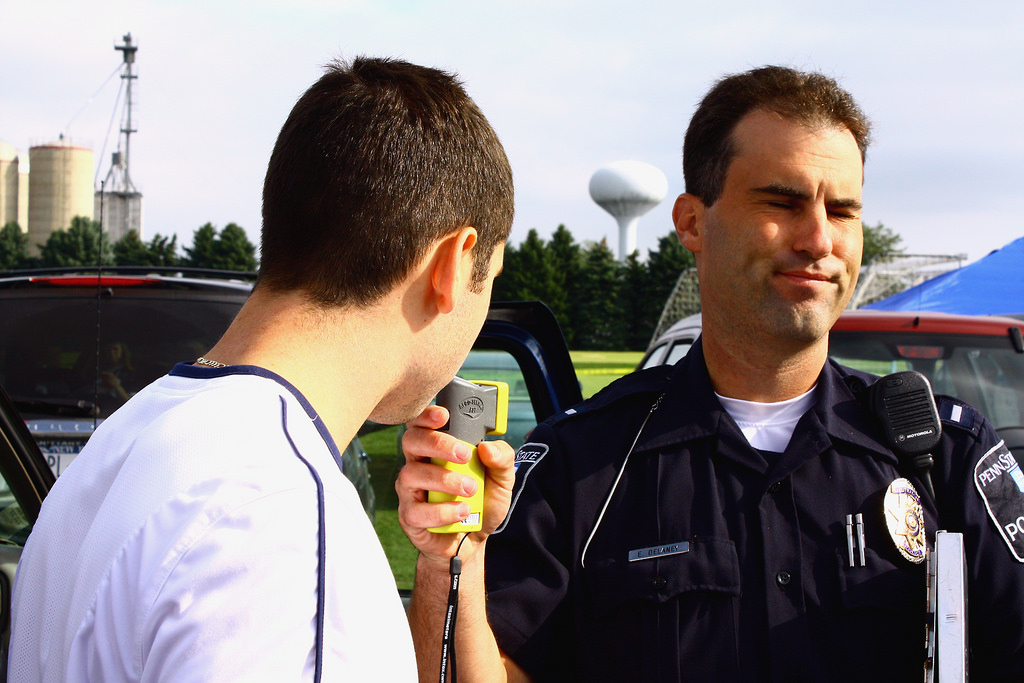In continual efforts to improve diagnostic and screening methods, a new emerging tool that is quickly gaining momentum is the “specialized breathalyzer.” An instrument once utilized exclusively by law enforcement officers for the measurement of blood alcohol levels, specialized breathalyzers are capable of utilizing various advanced analytical methods to measure components of an individual’s breath. These components, volatile organic compounds (VOCs), are produced as a result of different pathological processes such as inflammation, atherosclerosis, neurodegenerative diseases, and cancer. The compounds readily and efficiently diffuse through the alveolar-capillary barrier, making them a reliable and reproducible means of tracking real-time metabolic processes. Once within the alveolar space, an established means of analyzing VOCs within the alveolar gas mixture is gas chromatography/mass spectrometry (GC/MS). However, GC/MS is expensive, inconvenient, and difficult to operate, so a new analytical means of studying these volatile compounds has been developed. Field asymmetric ion mobility spectrometry (FAIMS) separates molecules according to the speed at which they move through a gas under the influence of an electric field. This depends in turn upon the collision cross-section (i.e., the size) of the molecules. FAIMS uses an asymmetric alternating voltage to separate molecules according to how their shape changes in high electric fields. Gaseous compounds then undergo ionization, filtration, and detection.
An example of the clinical application of this instrument, still in the preliminary phases of development, could be as a screening tool for at-risk populations for lung cancer. Rather than exposing these patients to frequent radiation imaging, which can be costly, the breathalyzer component will capture VOCs produced by way of oxidative stress and lipid peroxidation within the lung parenchyma as a result of carcinogenesis. The VOCs can be either stored for future analysis or immediately analyzed by the FAIMS detector. Once detected in the alveolar gas, these compound levels are utilized as a means of monitoring disease progression and response to therapy. One of the main hurdles is intra- and inter-device repeatability, with the same compounds producing different readings on different devices and even on the same device at different times.
Lung cancer is the leading cause of cancer death and the second most diagnosed cancer in both men and women in the United States. The potential of breathalyzers to detect early pathological changes in high-risk populations could save lives, reduce healthcare cost associated with treating higher-stage cancers, and guide therapeutic approaches. In an age where epigenetic blood markers are already being used to track breast cancer progression, this is another tool that can be added to the arsenal of clinicians to provide the best patient care for difficult diagnoses.
- Changsong Wang, Ran Dong, Xiaoyang Wang, Ailing Lian, Chunjie Chi, Chaofu Ke, Lei Guo, Shanshan Liu, Wei Zhao, Guowang Xu & Enyou Li. Exhaled volatile organic compounds as lung cancer biomarkers during one-lung ventilation. Scientific Reports 4, Article number: 7312 (2014). doi:10.1038/srep07312
- https://www.owlstonemedical.com/media/uploads/files/Lonestar_Medical_Brochure_v3.pdf
- https://www.cdc.gov/cancer/lung/basic_info/
- Legendre C, Gooden GC, Johnson K, Martinez RA, Liang WS, Salhia B. Whole-genome bisulfite sequencing of cell-free DNA identifies signature associated with metastatic breast cancer. Clinical Epigenetics. 2015;7(1):100. doi:10.1186/s13148-015-0135-8.
Ogaga Ojameruaye is a medical student at The University of Arizona College of Medicine – Phoenix. He completed his BS in physiology at The University of Arizona and completed his MS in psychology at Grand Canyon University. Ogaga is passionate about translational medicine, bench-to-bedside research, and the discovery of new diagnostic tools as they contribute to the model of precision medicine.

